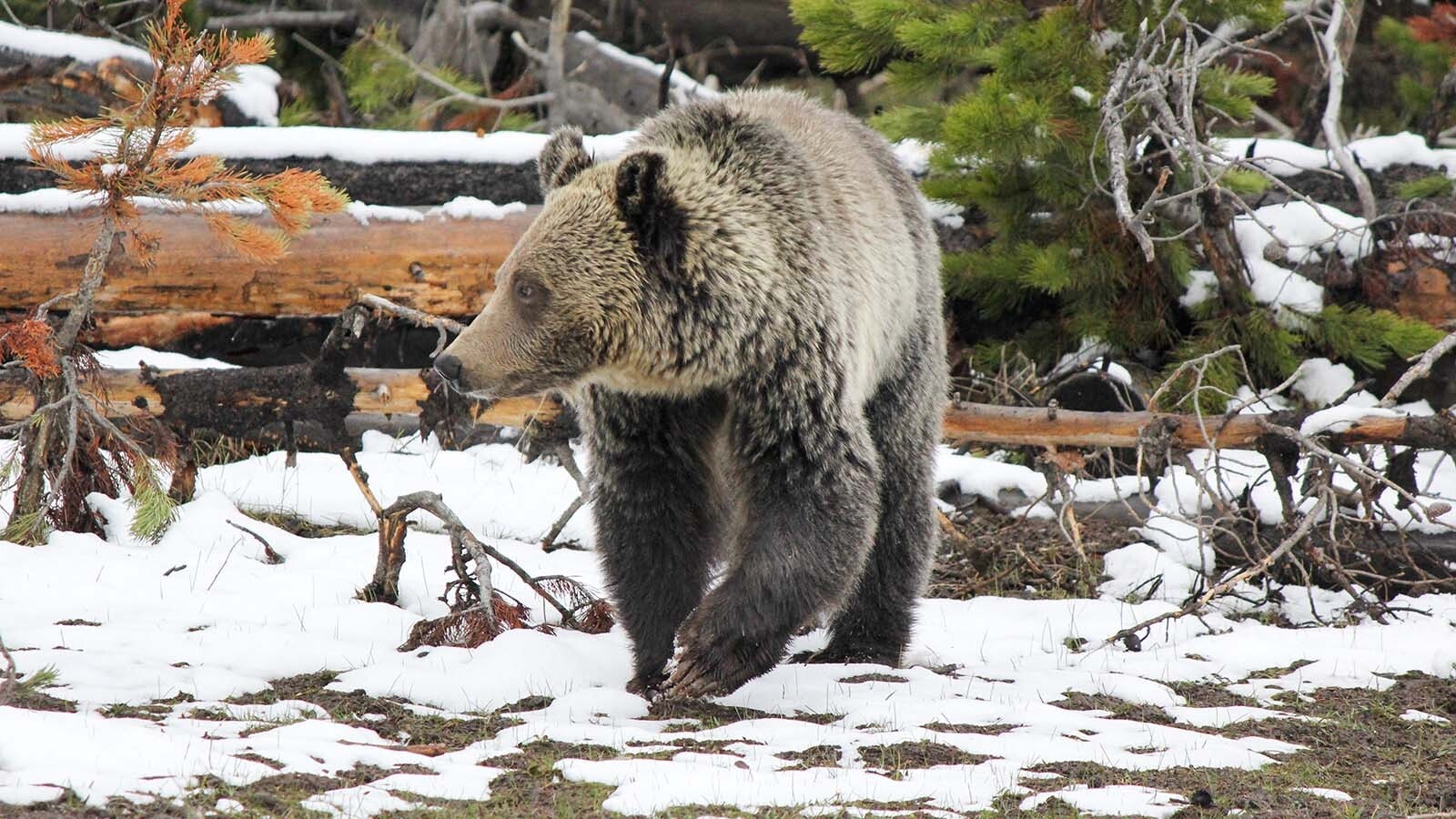Grizzly bears don’t like surprises, and for a mountain biker barreling around a corner straight at a bear on a narrow trail, things could end badly.
Things ended the worst way possible near Glacier National Park, Montana, in 2016. Mountain biker Brad Treat, 38, and a friend surprised a bear at close range, and it attacked Treat.
Reports from the time indicate that Treat might have collided with the bear at a high rate of speed.
His friend fled and looked for help, but by the time rescuers reached the scene, Treat was dead, according to reports.
Retired federal ecologist Chuck Neal of Cody frequently hikes in grizzly country and said he’s concerned that the ever-growing number of mountain bikers and the area’s robust grizzly population could lead to more ugly incidents.
Mountain bikers are going fast and are focused on what’s in front of them, Neal said. That makes them more vulnerable to surprise grizzly encounters.
“When I’m out hiking, I’m constantly scanning the country on all sides. I’m even looking behind me,” Neal said. “A mountain biker doesn’t have that luxury. He’s got to watch the trail closely or he’s going to bust his ass really quickly.”
More Bikes On Trails
Mountain biking started gaining popularity in the 1980s and has grown steadily since.
In the past few years, mountain biking has been part of a huge surge in outdoor recreation, which has become an economic juggernaut nationally.
There are more mountain bikes than ever on the trails – including in locales such as Wyoming’s Park and Teton counties, which also have some of the Lower 48’s biggest populations of grizzly bears.
And as e-bikes become more technologically advanced and affordable, they’re starting to show up in droves.
Some e-bikes are equipped with pedal assist, which allow riders to go farther and faster with less effort. Some are fully powered, making them essentially small motorcycles.
Moving Fast, But Not Seeing Well
All that means is that there are more people than ever traveling through bear country, moving fast and going ever-farther back into the wilderness, Michael Kusiek, executive director of Wyoming Pathways, told Cowboy State Daily.
The best way to avoid grizzly attacks is for the bears to know people are coming. And bikes move much faster than people on foot and can also be surprisingly quiet, he said.
Some of the more advanced e-bikes are especially quiet, he said.
And, as Neal noted, the bikers themselves typically aren’t exercising broad situational awareness, increasing the odds that they won’t know a bear is there until it’s too late.
“You frequently can’t hear very well when you’re on a bike” because of the air rushing past your ears, he said.
“When you’re going up a hill on a bike, huffing and puffing, you’re looking down at the ground right in front of you,” Kusiek added.
Bear Spray And Bells
Kusiek, who frequently mountain bikes in grizzly county, recommends a few simple tricks.
For starters, riders shouldn’t be shy about attaching bells to their bikes.
“Put bells on your bike handlebars. As you’re bumping along, it will ring and alert bears to your presence,” he said.
He also makes it a habit to check in with local forest service rangers for recent reports of bears in the area.
The U.S. Forest Service and other agencies will also put up warning signs when there’s been bear activity near a trail, he said, so mountain bikers should watch for those.
Unlike hunters, who must be silent to prevent frightening game away, mountain bikers should be loud, Kusiek said.
“Every once in a while, shout out, ‘Hey bear! Hey Bear!’” he said.
“It’s really important for bears to know you’re there.”
He also recommends carrying bear spray, in case of an unavoidable close encounter.
Many backcountry experts say bear spray is highly effective, although it takes practice to master pulling a bear spray can from a holster in time to use it effectively.
Mark Heinz can be reached at mark@cowboystatedaily.com.





